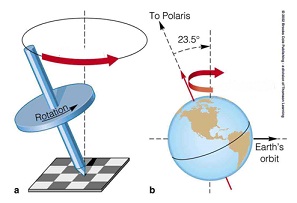Response to the following multiple choice questions:"
1. Describing a star as being in the constellation Gemini tells a modern astronomer that the star is
in a distant galaxy located in a particular direction from Earth.
somewhere in a particular region of sky having definite boundaries.
one of a set of bright stars that make up a particular "picture" in the sky.
inside our solar system.
2. Which of the following is the correct sequence of appearances of Moon phases in the sky?
new moon, waning crescent, first quarter, full moon
waxing crescent, first quarter, waxing gibbous, full moon
new moon, full moon, waxing crescent, waning crescent
full moon, waxing gibbous, third quarter, waning crescent
3. The celestial sphere is an actual physical sphere that surrounds the Earth.
True
False
4. The average time it takes the Sun to traverse the sky around the globe takes 24hrs, which is what we now set our watches to! What is the name for this measurement of time?
Apparent Solar Time
Universal Time
Solar Time
Sidereal Time
Mean Solar Time
5. Earth's shadow falling on the Moon is the reason we see
the phases of the Moon.
lunar eclipses.
solar eclipses.
Earth's shadow cannot fall on the Moon.
6. The same side of the Moon is always visible from Earth.
True
False
7. An Astronomical Unit is
a measure of the distance, defined as the distance between the Earth and the Moon
a measure of distance, defined as the distance from the Earth to the Sun
a measure of time
a unit for describing rotational periods in astronomy
8. When we watch the nighttime sky, we find that
all stars and constellations reach their highest point in the sky at midnight.
most stars and constellations slowly rise in the east, pass overhead, and set in the west.
most stars and constellations slowly rise in the west, pass overhead, and set in the east.
the stars and constellations remain fixed in our sky, not rising or setting in a time as short as one night because they are so far away.
9. The coordinates in the sky are right ascension, the angular distance measured eastward along the celestial equator from the position of the vernal equinox, and __________, which is the angular distance north or south of the celestial equator.
10. Retrograde motion of a planet refers to which motion, when viewed from Earth?
the setting of the planet in the west to any observer, caused by Earth's rotation
apparent eastward motion with respect to the stars
southward motion as it moves away from the northern sky
apparent westward motion with respect to the stars
11. Retrograde motion was important in the development of our understanding of the solar system because
its description in terms of the heliocentric model is a great simplification in comparison to its description in terms of the geocentric model.
it was not discovered until 1920.
it happens only about once per century.
it cannot be described with the geocentric model.
12. A very slow motion of Earth's axis that requires 26,000 years to complete is called__________.

ecliptic
precession
declination
sidereal
parallax
13. The apparent path of the Sun upon the celestial sphere is called the ________.
Precession
Sidereal
Ecliptic
Parallax
14. Which way are you moving (on Earth) with respect to the stars during the rotation of Earth?
northward
southward
eastward
westward
15. According to Kepler's Law, a planet traveling in an elliptical orbit moves ___________ (faster or slower) around its orbit when it is closer to the Sun.
16. A solar eclipse occurs on Earth when the
Earth casts a shadow on the Moon.
Moon casts a shadow on Earth.
Sun passes in front of the Moon.
Moon passes behind the Sun.
17. The sky is divided up into ____ constellations, which cover the entire celestial sphere.
12
188
88
24
18. Lunar eclipses last longer than solar eclipses
True
False
19. Ptolemy's model for the solar system was
Sun-centered, with elliptical planetary orbits.
Earth-centered, with epicyclic planetary orbits.
Earth-centered, with Sun, Moon, and planets moving in ellipses in the sky.
Sun-centered, with planets moving in circles around it.
20. The ______ day is the time it takes for Earth to make one complete rotation with respect to a star other than our Sun.
zodiacal
synodic
sidereal
Julian
equinox
21. The current North Pole Star is called:
Polaris
Ursa Minor
Pokey
Vega
22. The model of the Solar System in which the Sun is at the center is called ____________________.
23. Why do we see different phases of the Moon?
The distance of the Moon from Earth changes because of the elliptical orbit of the Moon, causing the sunlit side of the Moon to move relative to Earth.
The motion of the Moon in its orbit around Earth causes us to see different amounts of Earth's shadow falling on the Moon.
The motion of the Moon in its orbit around Earth causes us to see different amounts of the sunlit side of the Moon.
The rotation of the Moon around its own axis causes us to see different amounts of the sunlit side of the Moon.
24.. The two primary motions of the Earth are _________ and __________.
rotation and revolution
eclipses and precession
rotation and retrograde
axial tilt and orbit
25. Kepler's First Law of planetary motion shows that the planets move in ________ orbits.
A. Perfectly circular
B. Helical
C. Square
D. Elliptical